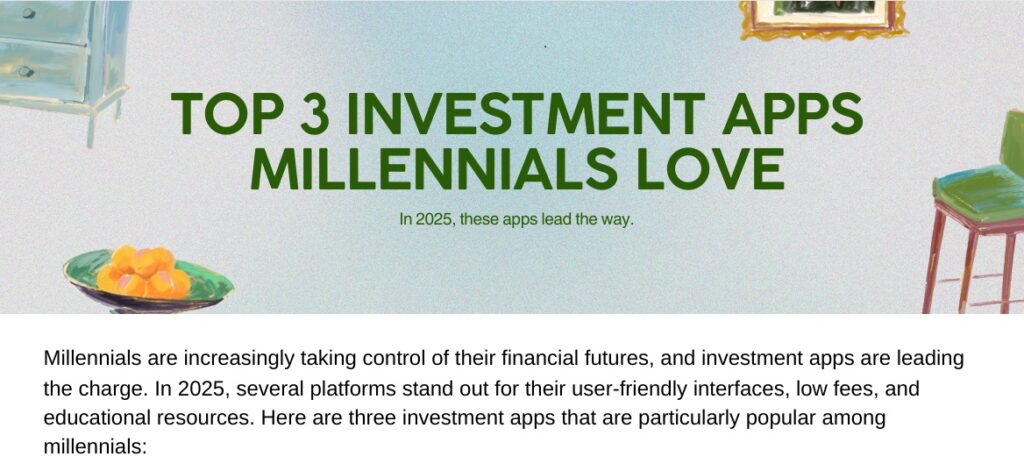The Top 3 Essential Apps for Personal Finance
Managing personal finance can often feel overwhelming. With bills to pay, budgets to stick to, and savings goals to meet, it’s easy to lose track. Fortunately, in today’s digitized world, there are numerous applications available designed to simplify your financial life. In this article, we’ll explore the top three essential apps for personal finance that can help you gain control over your money and achieve your financial goals.
1. Mint: Your All-in-One Financial Dashboard
What is Mint?
Mint is a popular personal finance app that helps users manage money by tracking expenses and budgets in one unified platform. With its simple interface, it connects to your bank accounts, credit cards, and other financial institutions to provide a comprehensive view of your finances.
Key Features of Mint
- Expense Tracking: Automatically tracks your expenses and categorizes them, making it easy to see where your money is going.
- Budgeting Tools: Set monthly budgets and receive alerts when you’re close to exceeding them.
- Credit Score Monitoring: Monitor your credit score for free and get personalized tips for improving it.
- Bill Reminders: Receive alerts for upcoming bills to avoid late fees.
How to Get Started with Mint
- Download the Mint app from the App Store or Google Play.
- Create an account and securely connect your bank accounts and credit cards.
- Set up your budgets and customize your financial goals.
- Regularly check in to track your progress and adjust your plans as needed.
2. You Need a Budget (YNAB): Taking Control of Your Budget
What is YNAB?
You Need a Budget, commonly known as YNAB, is an innovative personal finance app that focuses on proactive budgeting. It encourages users to assign every dollar a job, thereby helping them prioritize spending and savings.
Key Features of YNAB
- Proactive Budgeting: YNAB teaches users how to budget based on their income and upcoming expenses.
- Goal Tracking: Set and track savings goals to stay motivated and accountable.
- Reporting Tools: Get insights into your spending habits and identify areas for improvement.
- Mobile Compatibility: Access your budget from anywhere using the mobile app.
How to Get Started with YNAB
- Sign up for a YNAB account on their website; a free trial is often available.
- Input your income and create categories for your expenses.
- Assign every dollar a job based on your goals and needs.
- Review and update your budget regularly to adapt to changes in your financial situation.
3. Personal Capital: Investment and Retirement Planning
What is Personal Capital?
Personal Capital combines budgeting and investment tracking in a single app. This financial toolkit is designed for users who want to manage their personal finance comprehensively while keeping an eye on their investments and retirement planning.
Key Features of Personal Capital
- Investment Tracking: Provides an overview of your investment accounts, including a look at asset allocation and risk assessment.
- Retirement Planning Tools: Offers retirement calculators and projections based on your current savings and spending patterns.
- Net Worth Calculator: Track your total net worth over time by connecting all your financial accounts.
- Fee Analyzer: Analyze your investment fees to ensure you’re not overpaying.
How to Get Started with Personal Capital
- Download the Personal Capital app or visit their website to create an account.
- Connect your bank accounts and investment portfolios securely.
- Utilize the retirement planning tools to assess your financial readiness for retirement.
- Regularly check your investment performance and net worth status.
Why Use Personal Finance Apps?
In a world where financial decisions can make or break your future, using personal finance apps offers several benefits:
- Convenience: Access your financial data anytime, anywhere, right from your mobile device.
- Organization: Keep all your financial information in one place, making monitoring your finances easier.
- Proactivity: Stay ahead of bills and financial goals, reducing the risk of financial pitfalls.
- Education: Many apps provide resources and tips to improve your financial literacy.
Frequently Asked Questions
How do I choose the best personal finance app for me?
Consider your financial goals and what features matter most to you. Think about whether you need help with budgeting, investment tracking, or overall financial management. Try a couple of apps to see which one fits your personal style best.
Can I use these apps for free?
Most of these apps offer free versions or trials. However, some features may be limited unless you opt for paid subscriptions. Review each app’s pricing model to determine if it fits your budget.
Will these apps keep my financial data safe?
Reputable personal finance apps use encryption and security measures to protect your data. Always review the privacy policy and security features before connecting your financial accounts.
How can I make the most of personal finance apps?
To maximize the benefits, be consistent in updating your data, review your budgets regularly, and set specific financial goals. Engage with the app features thoroughly to stay informed about your financial health.
Conclusion
Managing personal finance doesn’t have to be a daunting task. The right tools can make all the difference. By using the essential apps mentioned in this article—Mint, YNAB, and Personal Capital—you can take charge of your finances, streamline your budgeting, and plan for the future with confidence. Start by downloading one of these apps today and take the first step towards financial empowerment!
If you enjoyed this article, or if you have more questions about personal finance, don’t hesitate to leave a comment below. Your financial journey is just beginning, and with the right resources, you can achieve your goals!
